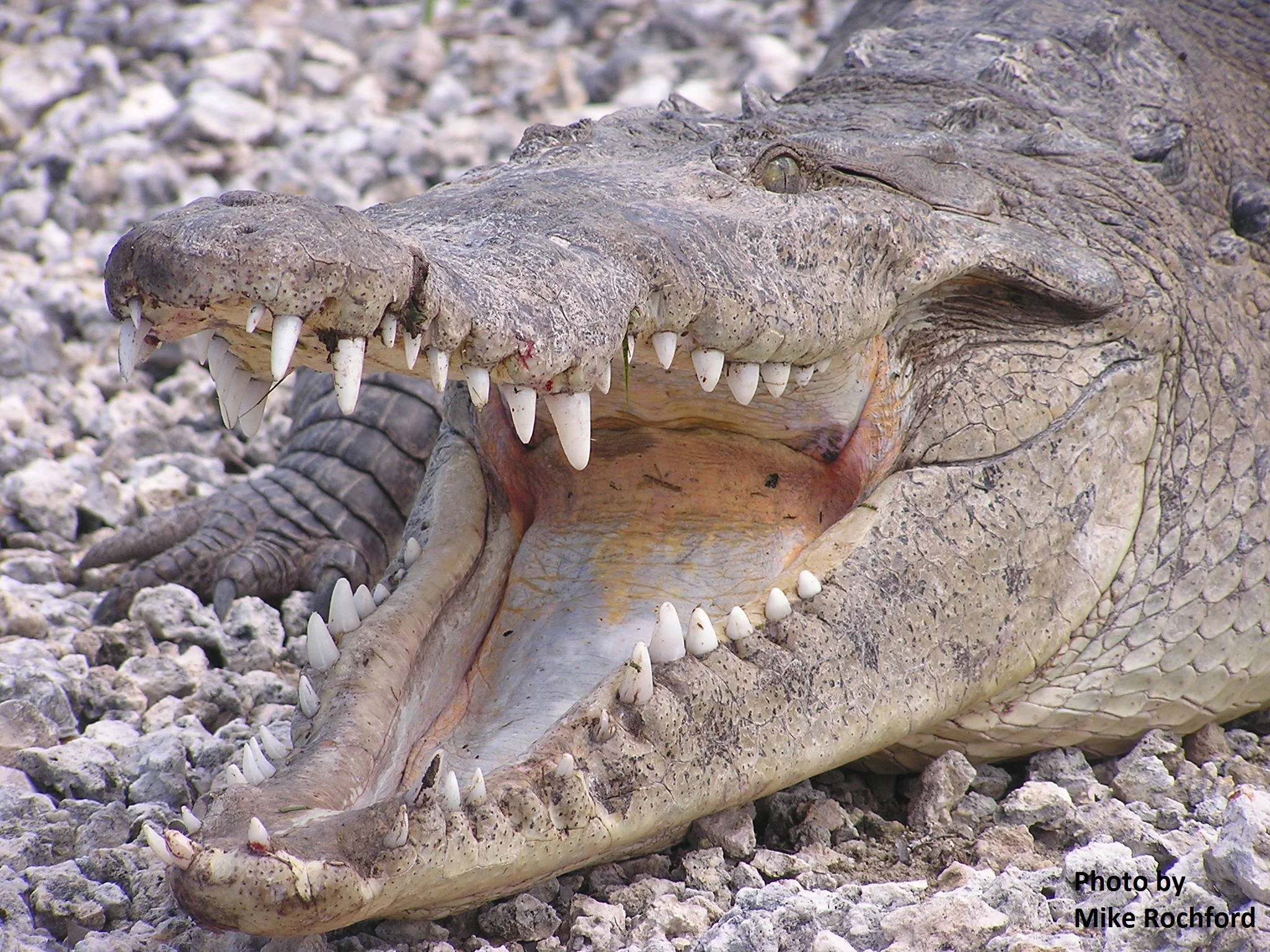The American crocodile (Crocodylus acutus) is the most widely distributed of the New World crocodiles, ranging from the southern tip of Florida, along both the Atlantic and Pacific coasts of southern Mexico, Central America, and northern South America, as well as the Caribbean islands of Cuba, Jamaica, and Hispaniola. It is one of two species of crocodilian native to Florida, the other being the American alligator (Alligator mississippiensis). Crocodiles inhabit brackish or saltwater areas and can be found in ponds, coves, and creeks in mangrove swamps.
American crocodiles are large, lizard-shaped reptiles with long, muscular tails. Adults typically are grayish-green with white or yellowish undersides. Hatchling and young crocodiles are similar in color but have dark cross bands on the back and tail. In general, crocodiles have narrow, triangular-shaped snouts with the fourth tooth on both sides of the lower jaw exposed when the mouth is closed. Male crocodiles are larger, rarely exceeding 14 feet, while breeding females range from approximately 8 to 12 feet.
In Florida, the crocodile is state and federally listed as Threatened and there are approximately 2,000 crocodiles living in the wild. When the crocodile was previously listed as Endangered, their population in Florida was estimated to be 400-500 animals.
Until recently, crocodiles were a rare sight in southern Florida but with their numbers gradually increasing, more and more Floridians are able to see crocs in the wild. This is cause for concern for some, however, few conflicts have occurred and to date there has never been a confirmed attack. Despite their increase in numbers, crocodiles are still threatened in Florida by modification and loss of habitat and by intolerance of humans. Protection of the remaining crocodile habitat in Florida, enhancement of Everglades’ ecosystems, and increased public awareness and knowledge will ensure the survival of this iconic species.
Content adapted from the following sources:
-by Patrick Delaney


